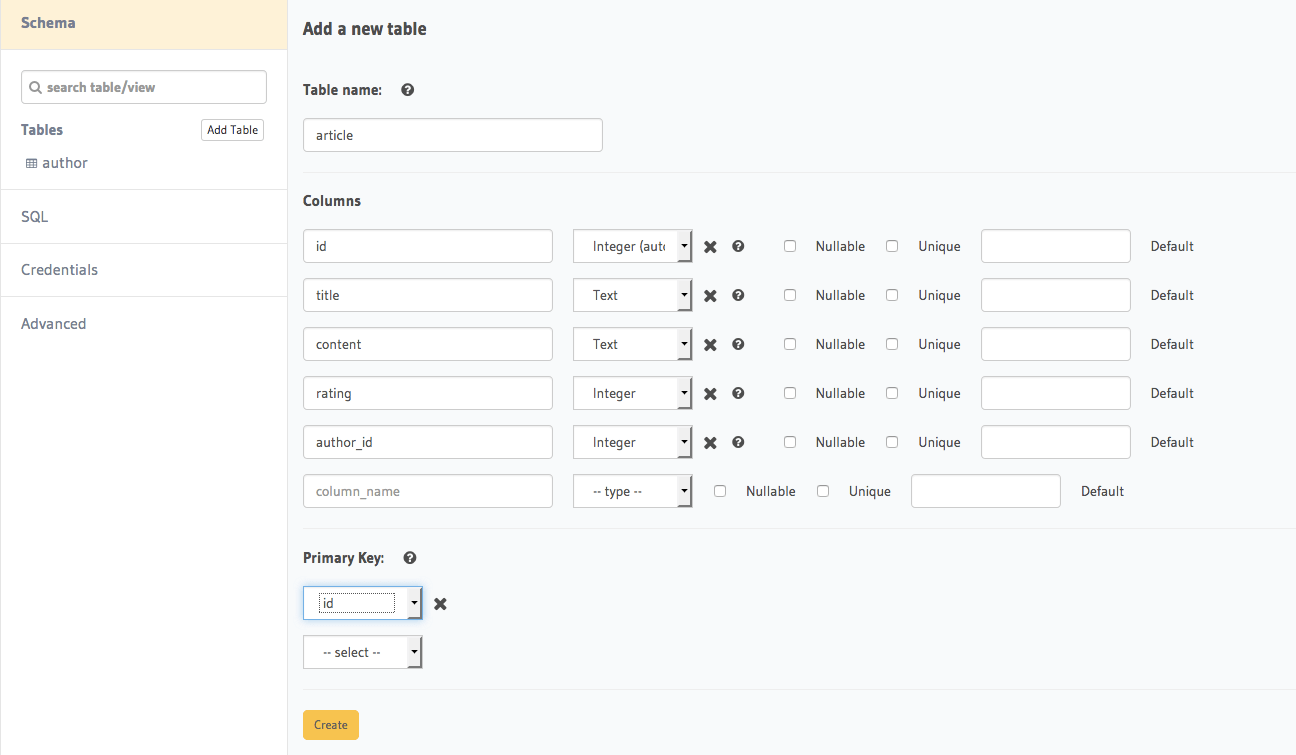Schema design basics¶
Table of contents
The Hasura GraphQL engine creates GraphQL schema object types and corresponding query/mutation fields with resolvers automatically as we create tables/views in the Postgres database.
Let’s take a look at how to create tables using the Hasura console, a UI tool meant for doing exactly this, and the GraphQL schema it generates.
Let’s say we want to create two simple tables for an article/author schema:
author (
id SERIAL PRIMARY KEY,
name TEXT
)
article (
id SERIAL PRIMARY KEY,
title TEXT,
content TEXT,
rating INT,
author_id INT
)
Create tables¶
Open the Hasura console and head to the Data tab and click the Create Table button to open up an interface to
create tables.
As soon as a table is created, the corresponding GraphQL schema types and query/mutation resolvers will be automatically generated.
For example, here is the schema for the article table in this interface:

The following object type and query/mutation fields are generated for the article table we just created:
# Object type
type Article {
id: Int
title: String
content: String
rating: Int
author_id: Int
}
# Query field
article (
where: article_bool_exp
limit: Int
offset: Int
order_by: [article_order_by!]
): [article!]!
# insert/upsert mutation field
insert_article (
objects: [article_insert_input!]!
on_conflict: article_on_conflict
): article_mutation_response
# update mutation field
update_article (
where: article_bool_exp!
_inc: article_inc_input
_set: article_set_input
): article_mutation_response
# delete mutation field
delete_article (
where: article_bool_exp!
): article_mutation_response
See the query and mutation API references for the full specifications.
You can insert some sample data into the tables using the Insert Row tab of the created tables.
Try out basic GraphQL queries¶
At this point, you should be able to try out basic GraphQL queries/mutations on the newly created tables from the GraphiQL tab in the console (you may want to add some sample data into the tables first).
Here are a couple of examples:
- Query all rows in the
articletable
query {
article {
id
title
author_id
}
}
- Insert data in the
authortable
mutation add_author {
insert_author(
objects: [
{ name: "Jane" }
]
) {
affected_rows
returning {
id
name
}
}
}
Note that the author’s id does not need to passed as an input as it is of type serial (auto incrementing integer).
